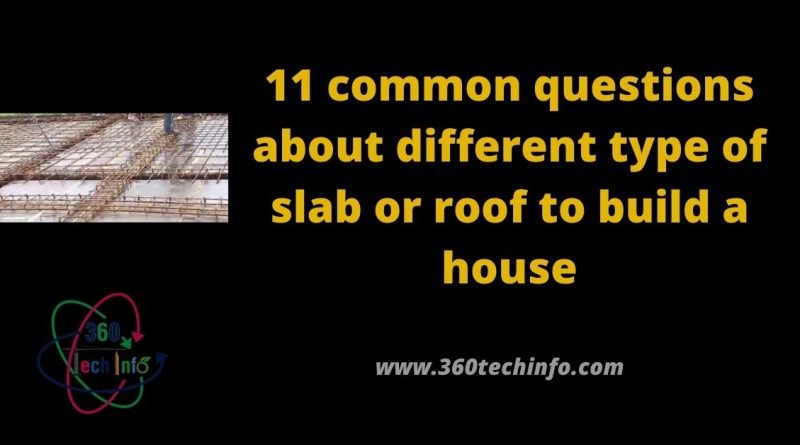11 common questions about different type of slab or roof to build a house
If you have applied for the post of Assistant R.C.C Design Engineer. Then you may be asking questions about different type of slab or roof to build a house.
11 important questions were asked about that.
1. What is meant by column capital?
Ans: The upper part of the column used below the flat slab is gradually widened. This wide part on the column is called column capital. Usually the amount of column capital. 20L to 0.25L.
2. What is meant by Environmental Land?
Ans: Different types of loads from the environment which are applied on the structure is called Environmental Load. Such as: wind pressure, soil pressure, earthquake, rainfall, temperature rise and fall etc.
3. What is a panel?
Ans: A drop panel is a part of a thickness greater than the thickness of a square or round slab just above the column and just below the slab.
The size of the drop panel depends on the size of the column. According to the ACI code, the amount of either side of the drop panel should be at least 0.33 times the slab length of the corresponding side.
4. Mention the amount of drop panels in the construction of flat slabs?
Answer: According to the ACI code, the amount of either side of the drop panel should be at least 0.33 times the length of the corresponding slab. The drop panel reduces the amount of tensile, compressive and shear stress created in that part.
5. What is meant by flat slab?
Ans: Slabs which are placed directly on the column without being placed on any type of beam or girder are called flat slabs.
6. What are the conditions for flat slab design as per ACI code?
A: Flat slabs are designed for all slabs which are almost square in shape and whose width is not more than 1.33 times the value of length. .
7. What is the basic difference between RCC One Way Slab and Two Way Slab?
Answer: Given the fundamental difference between R.C.C one-way slab and two-way slab, the length-to-width ratio of one-way slab will be greater than 2 and there will be support at the opposite end along the width. But the ratio of length to width of two way slab will be less than 2. And there will be support in four corners. .
8. Different types of R. C. C. Write the name of the floor slab?
Answer: R. C. C. The floor slabs are:
(A) One-way slab. (B) Bilateral slab. (C) Flat slab. (D) Ribbed slab. (E) r. B. Slab.
9. When is a two way slab designed?
A: When the slab is square or the ratio of length and width of the slab is less than 2. In all cases double-sided slabs are designed. The main reinforcement placed on either side of this slab shifts the laying on the supporting beams or wall around.
10. What is a one-way slab? questions about different type of slab
Answer: A slab that has two opposite parallel beams or walls along the width of the slab and a slab in which only the main support is used on one side is called a one-way slab.
11. Which ledge is considered in the slab design of a residential building?
Answer: (a) Stable load. (B) Moving load. (C) Environmental load.
In this post I share questions about different type of slab, If you learn something or informative then please comment us.
Important Technical terms used in Stairs
Classification of Pile Foundation II Types of Pile Foundation and Use




